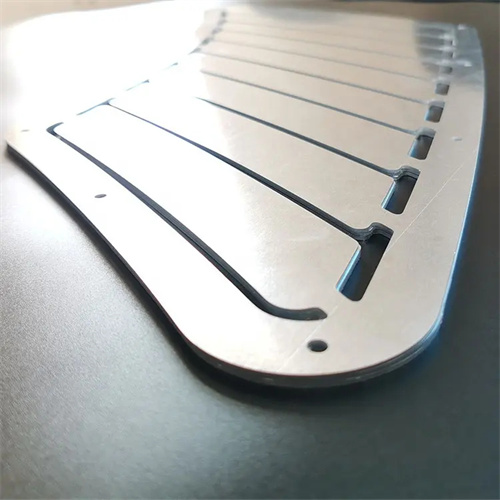Typical structure of blanking die
The typical structure of a blanking die can be divided into three categories: simple, continuous, and compound, depending on the production batch, part precision, and process requirements. Each structure has its own unique form and application scenarios. Choosing the right blanking die structure is key to improving production efficiency and ensuring part quality. It requires comprehensive consideration of factors such as part shape complexity, dimensional accuracy, material properties, and production batch size to achieve a balance between technical feasibility and economic rationality.

A simple blanking die is the simplest blanking die in structure, capable of completing only one blanking operation (such as blanking or punching) in a single stroke. It basically consists of two parts: an upper die, comprising the punch, a punch retaining plate, an upper die holder, and a guide sleeve; and a lower die, comprising the die, a die retaining plate, a lower die holder, guide pins, and a stripper plate. Simple blanking dies typically utilize retaining pins and guide plates for positioning, while the stripper is typically a rigid stripper plate. Due to their simple structure, simple blanking dies offer a short manufacturing cycle and low cost, making them suitable for small-batch production with low precision requirements, such as trial production or single-piece production of small hardware components. However, their low production efficiency and poor dimensional consistency of the blanked parts make them unsuitable for large-scale production.

A progressive die (also known as a die) consists of multiple punching stations arranged sequentially within a die. A single stroke completes multiple processes (such as blanking, punching, and trimming), with the sheet material continuously fed through the die. The key to a progressive die is positioning accuracy between stations. This is typically achieved using either side blade spacing or guide pin spacing. Side blades control the feed pitch by punching a notch of a specific shape into the sheet edge. Guide pins correct the sheet position by inserting into positioning holes punched by the previous station. Progressive die production efficiency is extremely high, making it suitable for high-volume production of small, precision parts such as electronic components and automotive connectors. However, its disadvantages include complex die structure, manufacturing difficulty, high cost, and stringent requirements for sheet flatness and feeding accuracy.

Compound blanking dies perform multiple stamping operations simultaneously within a single die, such as blanking and punching, in a single stroke, allowing the workpiece to achieve its final shape directly from the die. A compound blanking die features a composite die blade that serves as both the blanking die and the punch, achieving this dual operation through either an inverted or upright configuration. In an inverted compound die, the punch is mounted on the upper die and the die on the lower die, allowing the workpiece to be ejected from the lower die. In an upright compound die, the opposite is true, with the die in the upper die and the punch in the lower die, allowing the workpiece to be ejected from the upper die. The greatest advantage of compound blanking dies is their high part precision. All processes are completed at the same station, eliminating the positioning errors associated with progressive dies. The resulting geometric tolerances, such as coaxiality and perpendicularity, can reach IT7 or higher. However, their complex structure and high mold manufacturing costs make them suitable for medium-volume production of parts requiring high precision, such as motor stators and rotors and precision gaskets.

Combination blanking dies are modular structures developed to accommodate high-variety, low-volume production. They achieve blanking of different parts by replacing functional modules such as the punch and die. The die frame of a combination blanking die utilizes a standardized design and is equipped with universal positioning, unloading, and guiding devices. When a product needs to be changed, only the corresponding working parts need to be replaced, significantly shortening the die design and manufacturing cycle. Combination blanking dies are highly modular and have strong component versatility, making them suitable for applications with frequent product updates, such as the production of accessories for the home appliance industry. However, their precision is affected by the clearance between the modules and is generally lower than that of monolithic dies. Furthermore, the high interchangeability requirements of the modules lead to relatively high manufacturing costs.

Specialty blanking dies, including precision blanking dies, bevel-edge blanking dies, and heated blanking dies, are suitable for blanking processes involving special materials or specific requirements. Precision blanking dies achieve pure shear deformation by reducing the blanking gap (generally 1%-3% of the plate thickness), increasing back pressure, and employing a toothed press plate. This allows for a bright band width exceeding 90% of the plate thickness, with dimensional accuracy reaching IT6. Bevel-edge blanking dies utilize a beveled punch or die edge, reducing the area of material simultaneously involved in shearing and lowering blanking force. This makes them suitable for blanking thick sheet metal or high-strength materials. Heated blanking dies heat the sheet metal or die to increase the material’s plasticity and reduce shear strength. They are suitable for blanking high-strength, low-plasticity materials such as stainless steel and titanium alloys. Specialty blanking dies are highly targeted and can address issues difficult to address with conventional blanking processes. However, their complex die structure leads to higher manufacturing and operating costs.
